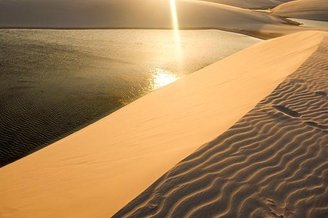The continuous process of water circulation on Earth (evaporation, transpiration, condensation, precipitation, infiltration, and runoff), also known as the hydrological cycle. may have begun four billion years ago or moreAccording to a recent study published in the journal Nature Geoscience.
The existence of the water cycle at a time when science believed “the Earth was completely dry” completely reversed this parameter, study co-author Hugo Olierook told the IFLScience website. The new understanding for the geoscientist at Curtin University in Australia was that the Earth was then covered by a global ocean and small islands emerged.
It is essential in sustaining planetary life and ecosystems in general, Evidence of precipitation in the planet’s primitive arid areas was seen in a small mineral grain called zircon.. These crystals, known for their durability and resistance to erosion, were determined to date to the Jack Hills geological region of Western Australia.
How the world’s oldest crystal showed evidence of fresh water
Because zircons contain small amounts of elements such as uranium, the authors used the oxygen isotopic composition of Jack Hills crystals. Analysis showed that these zircons originally formed from freshwater-containing magmas. They survived among very old, very old rocks.
Most zircons show evidence of formation in water, and the nature of the liquid can be revealed through the oxygen isotope present in the crystals. Most ocean water consists of oxygen-16 atoms, but it also consists of some oxygen-18 atoms. But “when water evaporates, more oxygen-16 evaporates,” Olierook says.
This is because oxygen-18 is “heavier”. While it has 8 protons but 10 neutrons, which is characteristic of all oxygen isotopes, oxygen-16 has only 8 neutrons. In this way rainwater becomes isotopically lighter than seawaterI produce samples of lighter oxygen from zircons preserved in the Earth’s mantle.
The emergence of life may have occurred soon after the formation of the Earth

According to the paper’s first author, Hamed Gamaleldien of Khalifa University in the United Arab Emirates, two key pieces of evidence discovered in the study were: “There was land above sea level, and at the same time, that land was interacting with freshwater.”.
In other words, the geochemist concludes, if we have a hydrological cycle, we have the recipe for the beginning of life. But the question of whether this life arose from underwater hydrothermal vents or from a “small, warm lake” as Darwin intended remains a mystery.
Did you like the content? Check out the Science section on TecMundo to keep up with the latest updates on nature, astronomy and physics. To the next one!
Source: Tec Mundo
I’m Blaine Morgan, an experienced journalist and writer with over 8 years of experience in the tech industry. My expertise lies in writing about technology news and trends, covering everything from cutting-edge gadgets to emerging software developments. I’ve written for several leading publications including Gadget Onus where I am an author.













